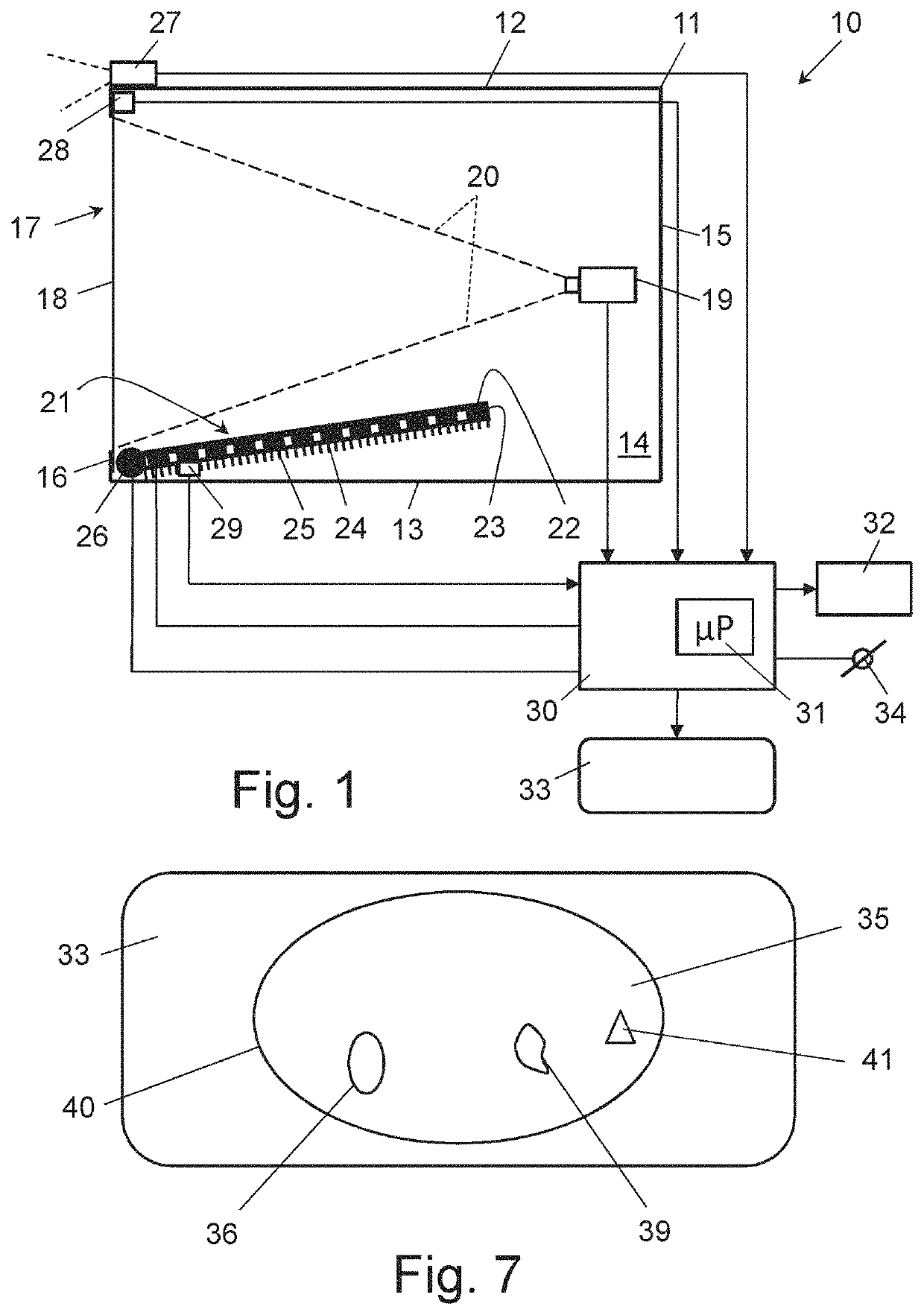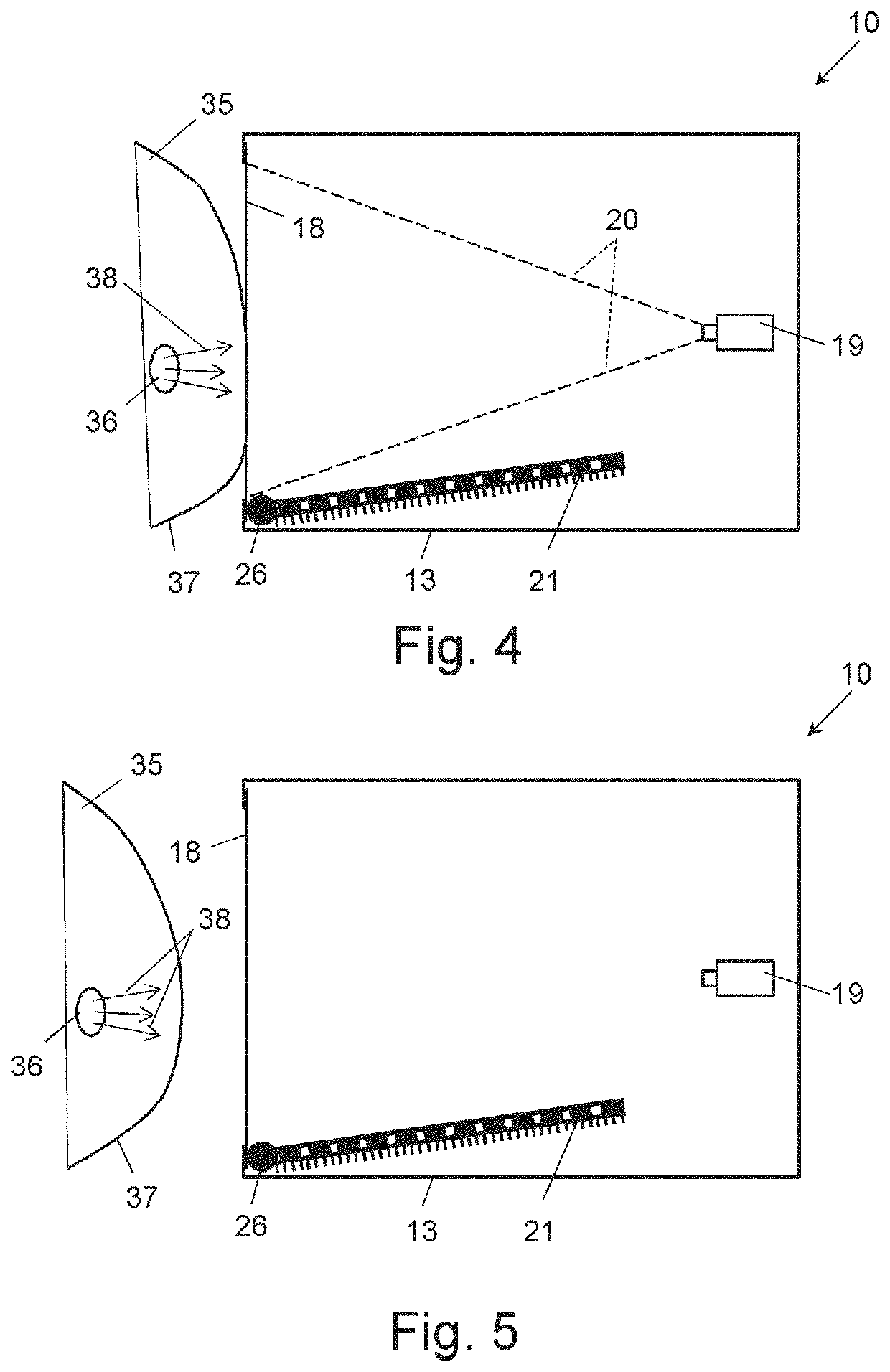Device and method for thermal imaging of a living mammal body section
a technology of thermal imaging and living mammals, applied in the field of thermal imaging, can solve the problems of insufficient detection methods and systems based on thermospatial imaging and thermography, excessive coloration, and inability to distinguish and detect irregularities in examined body sections. , to achieve the effect of convenient us
- Summary
- Abstract
- Description
- Claims
- Application Information
AI Technical Summary
Benefits of technology
Problems solved by technology
Method used
Image
Examples
Embodiment Construction
[0065]FIG. 1 shows a cross-sectional view of an embodiment of a device 10 for obtaining thermal images of a living mammal body section in accordance with the invention. The device 10 has a housing 11, generally comprised of a top part or wall 12, an opposing bottom part or wall 13, two opposing side parts or walls 14, a back part or wall 15 and an open front part or wall 16, when viewed in the operating position of the device 10 as shown FIG. 1. An opening 17 of the front part 16 is covered by a thermal energy storage surface structure 18, such as a thermal energy storage plate or foil, having a flat or curved surface shape, in particular an opaque thermal energy storage plate or foil, for contacting the body section to be imaged.
[0066]In the housing 11, near the back part 15 thereof, a thermal sensor 19 is arranged having field of view 20 direct towards the thermal energy storage surface structure 18, for obtaining thermal images reflecting the storage of thermal energy from at lea...
PUM
 Login to View More
Login to View More Abstract
Description
Claims
Application Information
 Login to View More
Login to View More - R&D
- Intellectual Property
- Life Sciences
- Materials
- Tech Scout
- Unparalleled Data Quality
- Higher Quality Content
- 60% Fewer Hallucinations
Browse by: Latest US Patents, China's latest patents, Technical Efficacy Thesaurus, Application Domain, Technology Topic, Popular Technical Reports.
© 2025 PatSnap. All rights reserved.Legal|Privacy policy|Modern Slavery Act Transparency Statement|Sitemap|About US| Contact US: help@patsnap.com



